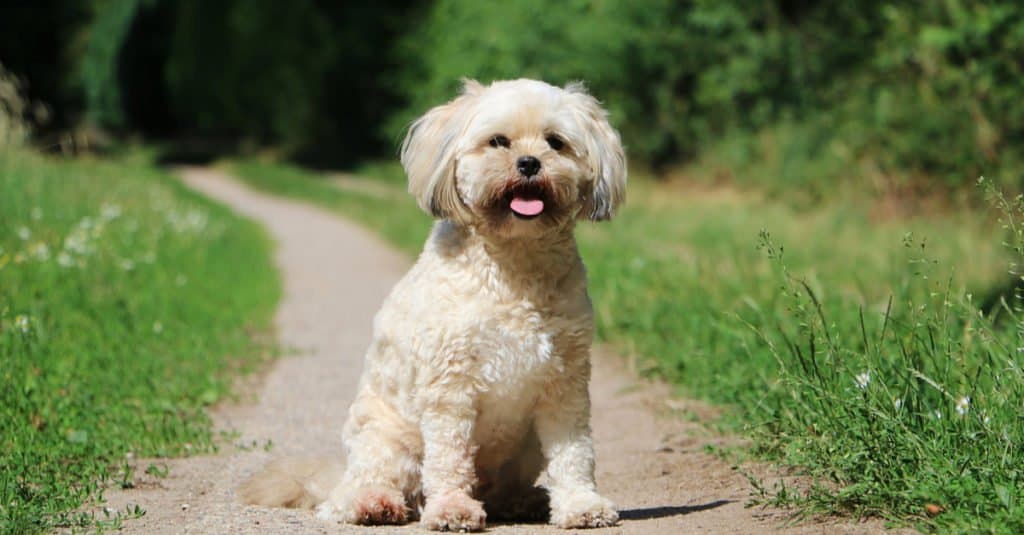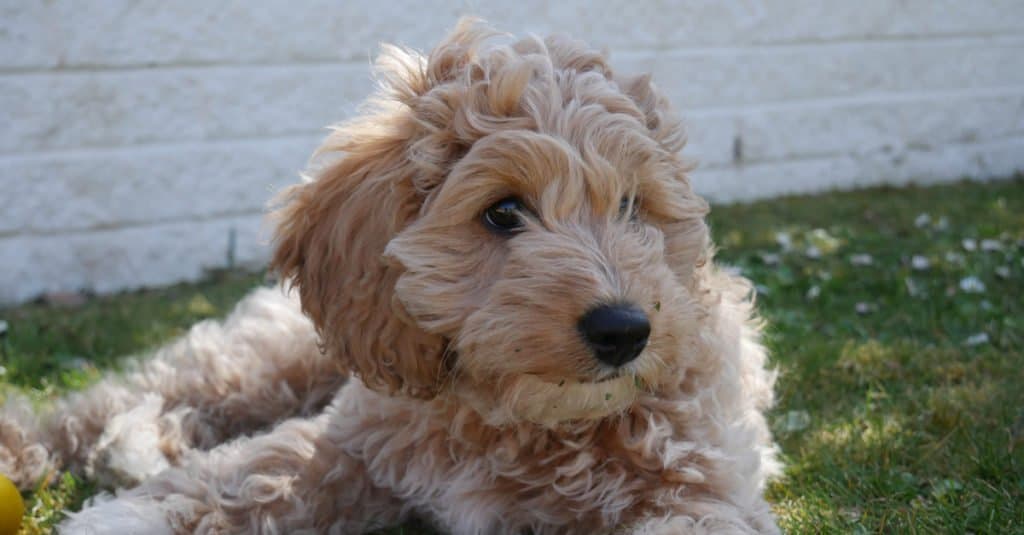Have you ever wondered what a Havapoo vs Cavapoo comparison would look like? After all, from their names to their Poodle parents and their personalities, these two hybrid dog breeds have a lot in common. Despite the similarities, though, there are several characteristics that help set the Havapoo apart from the Cavapoo – and we’ve listed some of the top differences below.
Ready to learn all about how different the Havapoo is from the Cavapoo? Keep reading!
Comparing Havapoos and Cavapoos

Between similar characteristics and even similar names, the Havapoo and the Cavapoo have a lot in common. However, they’re not identical, as seen in these key differences.
| Havapoo | Cavapoo | |
|---|---|---|
| Size | 8 to 15 inches at the shoulders 7 to 30 pounds | 9 to 14 inches at the shoulders 9 to 25 pounds |
| Coat/Hair Type | Medium length curly or wavy hair | Short, curly or wavy that is soft to the touch with proper grooming |
| Colors | It can be solid or a combination of colors. Colors include black, white, brown, tan, grey, silver, and fawn | Cream, fawn, brown, gold, chestnut, white. It may be solid, dual-colored, or tricolored. |
| Temperament | Affectionate, loving, family-oriented | Friendly, affectionate, laidback |
| Trainability | Moderate | Moderate |
| Life Expectancy | 10 to 14 years | 12 to 15 years |
| Energy Levels | Moderate | Moderate |
The 5 Key Differences Between Havapoos and Cavapoos
The key differences between Havapoos and Cavapoos are parent breed, tolerance to separation, coat type, health condition, and training.
Both the Havapoo and the Cavapoo are hybrid/mixed breeds that come from the Poodle. The Havapoo is the combination of the Havanese and Poodle, while the Cavapoo is the combination of a breed of Spaniel and the Poodle. These mixed breeds are similar in size, though the Havapoo can often grow to be one inch and five pounds larger than the largest Cavapoo. The Havapoo may also develop a different fur coat because of its Havanese parent.
When exploring the differences between the Havapoo and the Cavapoo, it’s important to remember that these are not purebred breeds. This means that there is no breed standard to determine an exact average for either dog, and there can be a lot of variation as a result. Some Havapoos may better represent their Havanese parent over their Poodle parent, making them even more different than the Cavapoo.
Havapoo vs Cavapoo: Parent Breeds

Havapoos are the offspring of Havanese and Poodles.
©Bianca Grueneberg/Shutterstock.com
As with any Poodle hybrid, you’ll find that the top difference is in the parent breeds.
The Havapoo is the hybrid between the Havanese and the Poodle. The Havanese is a small dog with a notably long double-coat that has made it popular as a “fashion” dog. However, the Cavapoo is the mixture of the Cavalier King Charles Spaniel and the Poodle.
The Cavalier King Charles Spaniel and the Havanese are two drastically different dogs. While their hybrid offspring are more similar due to their shared Poodle parent, many of these differences have still trickled down to the Cavapoo and the Havapoo.
Havapoo vs Cavapoo: Tolerance to Separation
Most small dogs have a tendency to suffer from separation anxiety. However, different breeds have a different tolerance to separation; a fact made clear by a comparison between the Havapoo and the Cavapoo.
Neither the Havapoo nor Cavapoo like be alone. Both Poodle hybrids love to be around their owners and are extremely affectionate. However, the Cavapoo is much more tolerant of being alone than the Havapoo.
The Cavalier King Charles Spaniel isn’t an especially “clingy” pet. They’re affectionate but also okay being alone – a characteristic most Cavapoos have adopted. However, the Havanese is an anxious breed, a trait they’ve passed on to the low-tolerant Havapoo.
Havapoo vs Cavapoo: Coat types

Cavapoos have curly hairs that rarely shed.
©Danny Shiers/Shutterstock.com
Tolerance to separation isn’t the only trait that the Havapoo and Cavapoo have taken from their parents. Both of these mixed breeds may also have different coat types.
The Poodle is known for its near-hypoallergenic, curly hair that rarely sheds. While this can commonly be seen in both the Cavapoo and the Havapoo, the latter may also adopt more traits of its Havanese parent. This can include a double-coat that features both a top coat and an undercoat. However, while this is often an indication of high shedding, the Havapoo tends to shed less than the purebred Havanese.
Havapoo vs Cavapoo: Health conditions
All small dogs share a tendency to develop certain health conditions. Eye and joint problems are especially prevalent. However, compared to the Cavapoo, the Havapoo has one major health difference to take into account.
The Havapoo is prone to allergies. While many dogs can have common season allergies (just like humans!), the Havapoo often suffers severely. In fact, Havapoos have been known to injure themselves by scratching. If you live in an area where there is an increased amount of allergens, you may prefer the Cavapoo instead.
Havapoo vs Cavapoo: Training

Havapoos are easier to train than Cavapoos.
©michaelheim/Shutterstock.com
Training is one of the most important aspects to take into account when choosing a dog breed. After all, training goes beyond tricks and simple commands to make sure your dog is safe, such as with leash training and recall.
Both the Cavapoo and the Havapoo have moderate trainability. These are intelligent dogs with a desire to please, but the Cavapoo is prone to becoming distracted. This may make them slightly more difficult to train than the Havapoo, although the potential is still there.
Conclusion
While it’s easy to mistake the Havapoo and Cavapoo at first, once you get to know each breed, you can see that they’re unique in many ways. The Havapoo is a bit shyer with the potential for a different coat type. Havapoos can be easier to train, but they’re prone to allergies. However, Cavapoos are more distractable, although they’re more tolerant to separation.
Either of these hybrid breeds could make a great addition to any home as long as they are adopted from an ethical breeder with standard practices. However, if you have a busy work schedule, the Cavapoo may work best for your lifestyle.
The photo featured at the top of this post is © Tryon Pics/Shutterstock.com
Ready to discover the top 10 cutest dog breeds in the entire world?
How about the fastest dogs, the largest dogs and those that are -- quite frankly -- just the kindest dogs on the planet? Each day, AZ Animals sends out lists just like this to our thousands of email subscribers. And the best part? It's FREE. Join today by entering your email below.
Thank you for reading! Have some feedback for us? Contact the AZ Animals editorial team.






